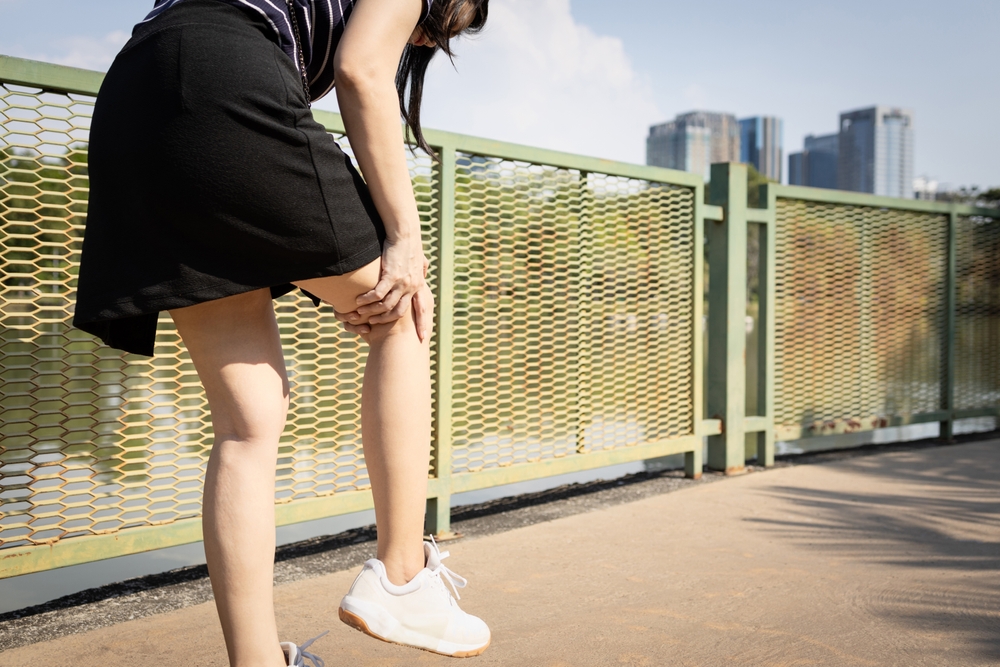

Limping – Causes, Diagnosis, and Treatment at Emirates Hospitals Group
Limping, or an abnormal gait, occurs when there is pain, weakness, or dysfunction in the leg or hip, causing difficulty walking. It can affect a person’s ability to perform daily activities and significantly impact their quality of life. At Emirates Hospitals Group, our orthopedic specialists provide expert care to diagnose the underlying causes of limping and offer effective treatment options to restore mobility and improve function.
Causes of Limping
Limping can result from a wide range of conditions affecting the muscles, bones, joints, or nerves. Common causes include:
- Injury or Trauma: Sprains, strains, fractures, or ligament tears in the hip, knee, ankle, or foot can cause limping due to pain and instability.
- Arthritis: Joint conditions such as osteoarthritis, rheumatoid arthritis, or hip/knee arthritis can lead to joint stiffness, pain, and difficulty walking.
- Muscle Weakness: Conditions that cause muscle weakness, such as muscular dystrophy or nerve damage, can result in limping as the muscles are unable to support proper movement.
- Hip Dysplasia: A congenital condition where the hip joint is misaligned, leading to discomfort and abnormal gait.
- Leg Length Discrepancy: When one leg is shorter than the other, it can cause an uneven gait and lead to limping over time.
- Tendonitis: Inflammation of the tendons around the hip, knee, or ankle can restrict movement and cause limping due to pain.
- Infections: Infections in the bones (osteomyelitis) or joints can cause significant pain, swelling, and limping.
- Nerve Damage: Conditions such as sciatica or neuropathy can affect the nerves that control leg movement, leading to limping or weakness.
- Bursitis: Inflammation of the bursae (fluid-filled sacs) in the hip or knee can cause pain and limited motion, leading to limping.
- Foot Problems: Conditions like plantar fasciitis, bunions, or ingrown toenails can affect how a person walks, leading to an altered gait.
Symptoms of Limping
Limping is often accompanied by other symptoms, including:
- Pain or discomfort in the hip, knee, ankle, or foot.
- Swelling or redness in the affected area.
- Stiffness or reduced range of motion in the joint.
- Difficulty bearing weight on the affected leg.
- A noticeable shift in walking posture or gait.
- Weakness in the affected leg.
Diagnosis of Limping
To determine the cause of limping, a thorough evaluation is necessary. Diagnostic methods may include:
- Physical Examination: The doctor will assess the patient’s walking pattern, range of motion, strength, and areas of pain or tenderness.
- Medical History: A review of previous injuries, surgeries, or medical conditions that could contribute to the limping.
- X-rays: Imaging to assess bone structure and detect fractures, arthritis, or other bone-related issues.
- MRI or Ultrasound: These imaging techniques can identify soft tissue injuries, such as ligament or tendon tears, and detect inflammation.
- Blood Tests: To check for underlying conditions, such as infections or inflammatory diseases.
- Nerve Conduction Studies: To evaluate nerve function and identify any nerve-related causes of weakness or pain.
Limping Treatments in Dubai
At Emirates Hospitals Group, our experienced orthopedic specialists work with each patient to determine the root cause of limping and develop a personalized treatment plan aimed at restoring mobility, reducing pain, and improving overall quality of life.
Treatment for limping depends on the underlying cause and severity of the condition. Common treatment options include:
- Physical Therapy: A customized therapy program to improve strength, flexibility, and mobility in the affected leg, as well as to correct abnormal gait patterns.
- Medications: Pain relief medications such as NSAIDs (nonsteroidal anti-inflammatory drugs) to reduce pain and inflammation. Corticosteroid injections may also be used for severe inflammation.
- Rest & Ice: Resting the affected leg and applying ice to reduce swelling and alleviate pain.
- Surgery: In cases of severe injury, deformity, or arthritis, surgical intervention may be necessary, including joint replacement surgery, tendon repair, or fracture fixation.
- Orthotic Devices: Custom-made insoles or shoe inserts to correct abnormal leg length or provide support for walking.
- Lifestyle Modifications: Maintaining a healthy weight, proper posture, and avoiding excessive strain on the affected leg can help reduce limping and prevent further injury.
- Bracing or Splinting: A knee, ankle, or foot brace may help stabilize the affected area and promote healing while allowing for limited movement.
- Injection Therapy: Injections of corticosteroids, hyaluronic acid, or platelet-rich plasma (PRP) to reduce pain and inflammation in joints or soft tissues.
Related Treatments
Request an appointment
Please complete the details and we will book you shortly.
